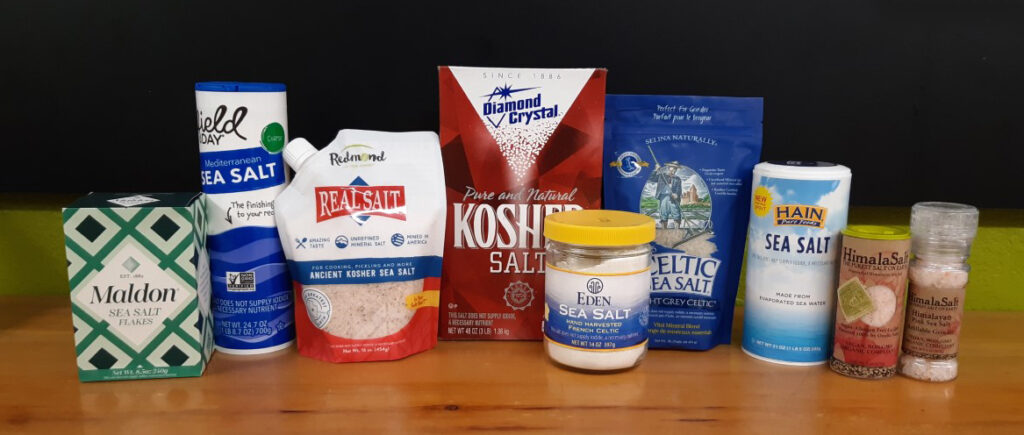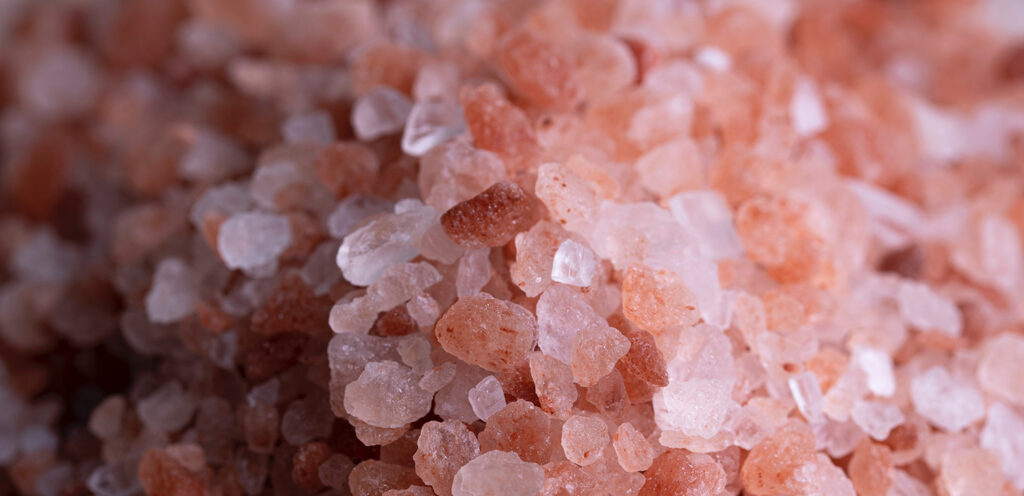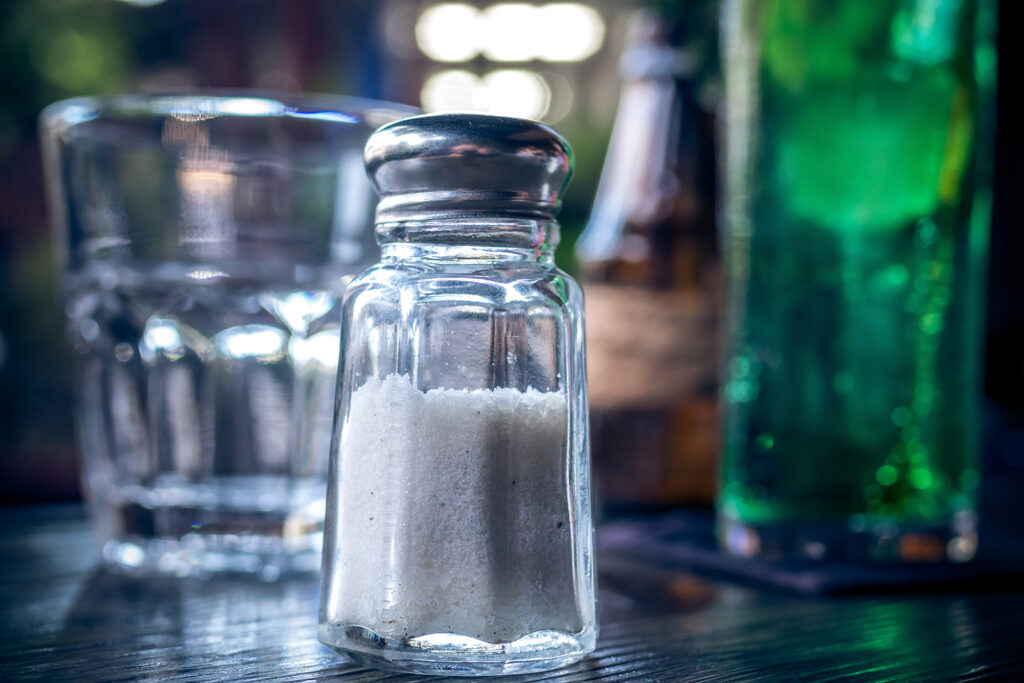All About Salt

Once upon a time, when you walked down the grocery store aisle where the salt was located, you would have found one kind of salt, table salt, usually iodized, often in a ubiquitous dark blue cylinder with a pouring spout and the name Morton, along with a picture of a girl under an umbrella. Morton Salt had the salt market cornered starting all the way back in the 1920s, but nowadays you will find many more choices in the salt aisle.
Let’s face it, salt is what makes food taste good. Salt just brings out the flavor of everything; many foods would be so bland without salt, like potato chips, nuts, and pretzels, to name a few. Salt actually makes foods taste sweeter and suppresses bitter flavors. Saltiness is one of the five fundamental flavors of human taste. The other flavors are bitter, sweet, sour, and umami (savory taste).
We are hardwired to crave salt, as our bodies need it to function properly. It’s an essential nutrient, and the body uses it for everything from regulating fluids and blood pressure to creating nerve impulses. (Too much salt, though, can lead to problems like bloating, elevated blood pressure, and restless sleep.)
So which salt is best? Here is a quick rundown of different types of salt available at Oryana.
Himalayan Salt

Himalayan salt comes from salt mines in Pakistan. It gets its pink color from dozens of trace minerals like potassium, magnesium, and calcium. It’s available in fine and coarse grains and is lovely as a finishing salt.
Celtic Sea Salt
Celtic Sea salt was originally harvested in Brittany, France. But according to the Celtic Sea Salt website, increased demand led to additional sourcing from other areas around the world. The classic light gray Celtic salt is harvested from clay lined beds. It is unrefined and slightly damp causing it to clump up. This isn’t a problem though if you avoid putting your Celtic salt in a salt shaker. Celtic salt is great for cooking and salting at the table.
Maldon Sea Salt
Sea salt flakes from Maldon have been hand harvested since 1882 in the town of Maldon, England. The flakes are large, pyramid shapes and are perfect as a finishing salt. You can sprinkle them as is for a dramatic, textured salt punch, or pinch and crush the flakes between your fingers for smaller flakes. Maldon also makes a smoked sea salt.
Kosher Salt
Kosher salt is the most widely used and available salt. It is a coarse salt and the term ‘kosher’ refers mainly to its original purpose of koshering meat, or removing blood from meat. Kosher salt is a mined salt and is a pure white crystal. It has a uniform flakiness, dissolves easily, and has a nice, clean flavor. Use it to season food during cooking. It’s fine also to offer it at the table in a small dish.
Redmond Sea Salt
Redmond sea salt is unrefined salt mined from an ancient underground seabed in Utah. It is unprocessed and contains plenty of trace minerals. The company says there are 60+ trace minerals in its salt. You can use it both during cooking and as a finishing salt. If you use this salt to make a brine, you may notice small bits that don’t dissolve. These bits are naturally occurring pieces of silica and are fine to consume.
What is table salt?

Table salt is what you typically find in salt shakers. It is mined salt that has been refined. It usually contains an anti-caking agent and may contain iodine. It can have a slight metallic taste.